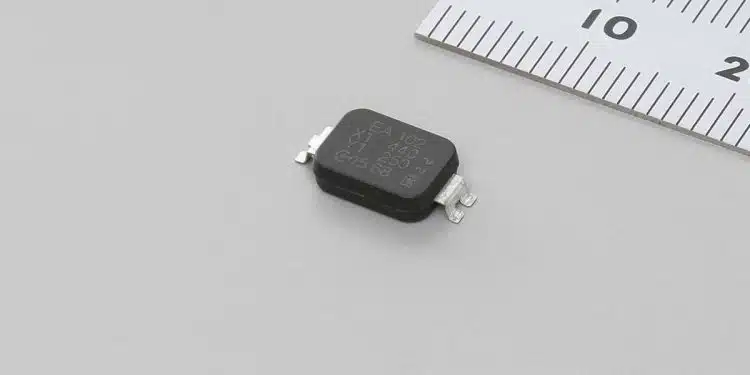Murata Manufacturing Co., Ltd. has expanded its product lineup of surface applied type IEC 60384-14*1 Y1*2 class safety certified ceramic capacitors for thin power supply devices with the commercialized 2,200 pF “DK1F3EA222M86”.
New addition of the surface applied type Y1 class safety certified capacitors contributes to making power supply devices smaller and thinner with the series maximum capacity of 2,200 pF.
This new product boasts the highest capacitance within its series. Mass production has already begun.
- *1IEC 60384-14: An international standard that defines the withstanding voltage and flame retardancy performances of capacitors connected to commercial power supplies from the perspective of preventing fire and electrocution caused by electric leakage.
- *2Y1: A capacitor subclass categorized by insulation type based on the above standard. The required performance for subclass Y1 capacitors is the highest.
In recent years, there is a growing need for thinner power supply devices in products including data center server power supply units and inverters for solar power generation. Murata’s safety certified capacitors are placed on the power line to eliminate noise present on commercial AC power lines and can be installed while reducing the thickness compared to lead type products since they are surface applied type products.
This 2,200 pF product, which boasts the highest capacitance within its series, has been added to the lineup of Y1 class safety certified ceramic capacitors, enabling smaller and thinner products to be released in the near future.
Murata will continue efforts to achieve smaller and thinner data center server power supply units and inverters for solar power generation.































